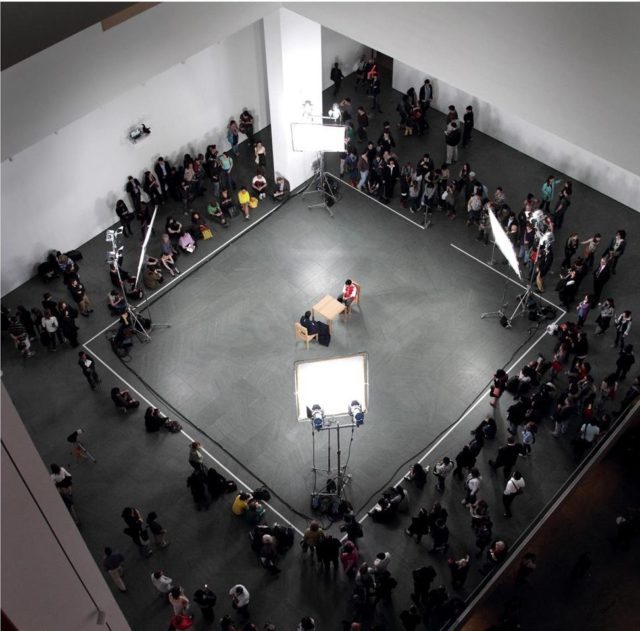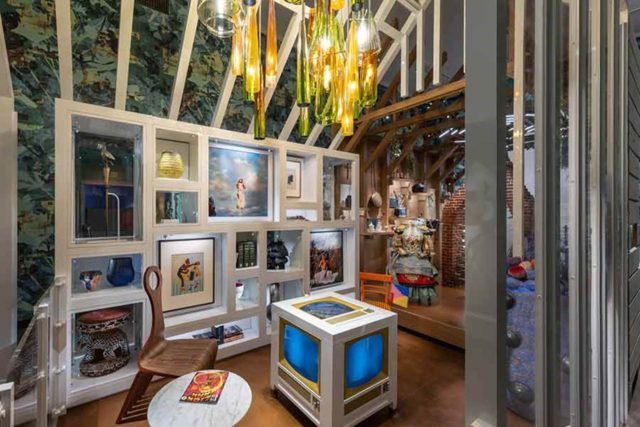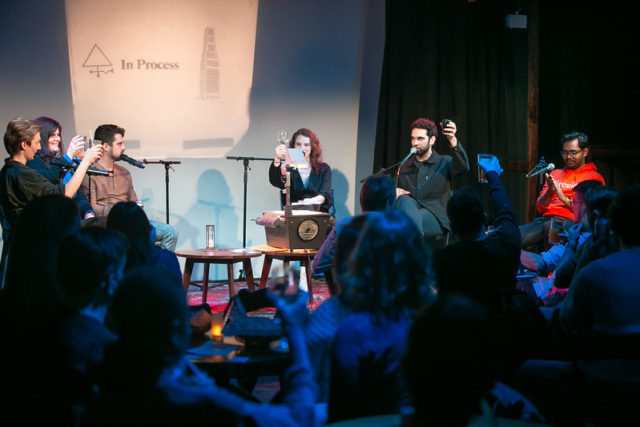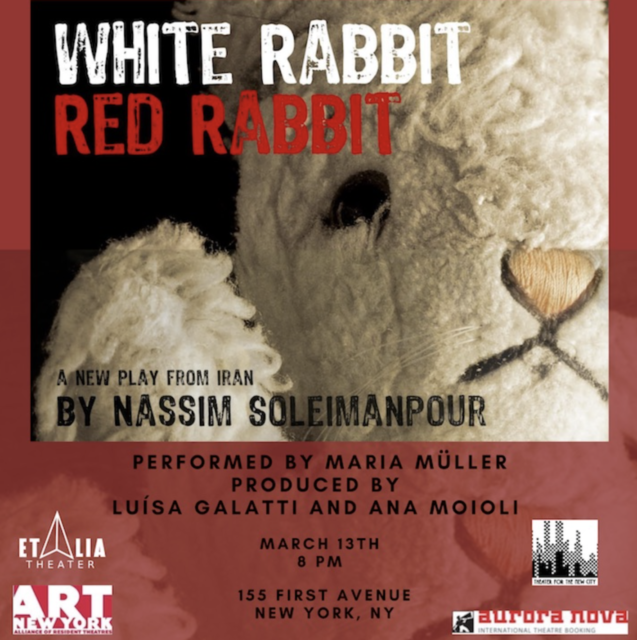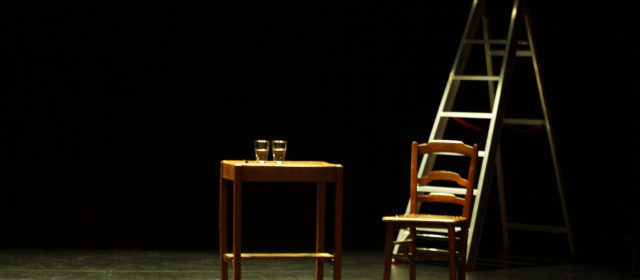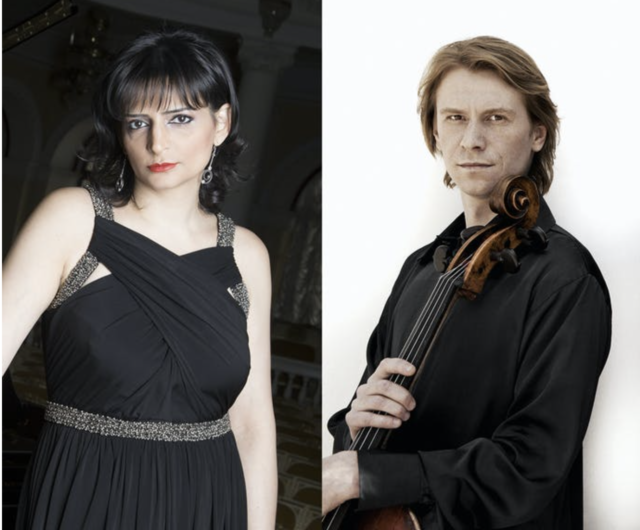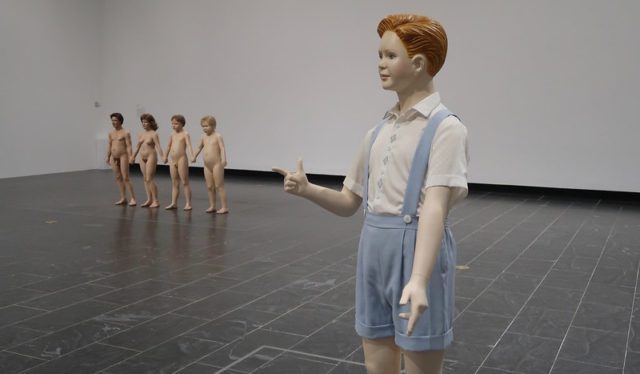
Charles Ray’s Boy points out Family romance at the Met (photo by twi-ny/mdr)
Who: Charles Ray, Hamza Walker, Kelly Baum, Leon Polsky
Brinda Kumar
What: Live panel discussion on exhibition “Charles Ray: Figure Ground”
Where: Grace Rainey Rogers Auditorium, Metropolitan Museum of Art, 1000 Fifth Ave. at 82nd St.
When: Tuesday, March 15, free with RSVP, 6:30 (will be recorded for on-demand viewing)
Why: In his essay in “A Questionnaire on Materialisms,” Chicago-born, LA-based sculptor, photographer, and performance artist Charles Ray wrote of encountering an odd phenomenon every time he approached a particular rock with his flashlight during his every-day early morning walk: The flashlight would always suddenly turn off. He becomes obsessed with discovering why it keeps happening, with no success at first. “Could there be a spirit or a ghost about, some being traumatized in the vicinity of this rock, and I was disturbing it every morning with my light? And was it this specter that was turning the light off?” he ponders. When he eventually finds out why it is turning off by the same rock every day, he admits, “I had found the location of my problem, and somehow it was still just as scary as before I knew the solution.”
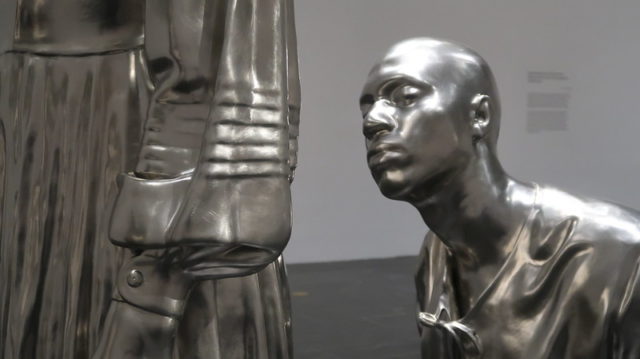
Detail, Charles Ray, Sarah Williams, stainless steel, 2021 (photo by twi-ny/mdr)
Ray’s relationship with the rock is not unlike viewers’ relationship with his art, particularly his sculptures, which range from ultrarealistic works that you will double check to make sure they’re not breathing to oversized and undersized depictions of characters in shiny metal or wood. Nineteen such objects are on display in “Charles Ray: Figure Ground,” continuing at the Met Fifth Ave. through June 5. The show opens with No, what appears to be a photograph of Ray but is actually a picture of a mold of his head and torso fitted with a wig and his glasses and shirt, letting us know from the very start that not everything we are about to see is what we think it is.
“Figure Ground” is a menagerie of sculptural objects that both confuse and delight. Boy is an adult-size mannequin-like child pointing away, questioning conventions of race, gender, and sexuality. Family romance consists of a naked mother, father, son, and daughter all the same size, holding hands, their faces not appearing to be too happy. For Tractor, Ray reconstructed an existing vintage farm vehicle part by part out of clay and wax, then cast it in aluminum, restoring a childhood memory. A vitrine containing the small sculptures Chicken, Hand Holding Egg, and Handheld Bird bring up ideas of birth and creation, nature and nurture, as well as the fragility of life; Chicken was designed to be touched but it is now too brittle.
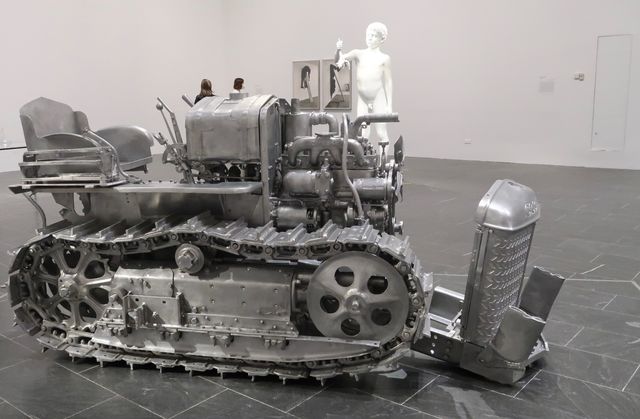
Charles Ray’s Boy with Frog stands behind Tractor in Met exhibit (photo by twi-ny/mdr)
Boy with Frog, a large-scale stainless-steel sculpture of a boy dangling a frog from his right hand, is painted white to evoke classical marble statuary. The stainless-steel Huck and Jim is left in glittering, reflective metal; both are naked, with Huck bent over, Jim’s hand almost touching Huck’s back, thoughts of monument destruction, homoeroticism, and cancel culture coming to mind. Mark Twain’s Adventures of Huckleberry Finn is also the impetus for Sarah Williams, in which Jim is on his knees behind Huck, who is disguised as a woman, a scene from chapter ten. Ray references Henri Matisse and Henry Moore in Reclining woman, which is like a Renaissance painting come to life in stainless steel, machined in stunning detail. Archangel was carved out of one block of Japanese cypress, a large-scale male who is a new kind of mythological figure, wearing flip-flops and rolled-up jeans and sporting a man bun. And you’re likely going to have to look at least twice to spot Rotating circle, a slowly spinning circle cut out of the wall that is scaled to Ray’s precise height, as if we are seeing it through his eyes.
In conjunction with “Charles Ray: Figure Ground,” the Met is hosting “An Evening with Charles Ray,” a panel discussion on March 15 at 6:30 in Grace Rainey Rogers Auditorium with Ray, Met curator Kelly Baum, and Met associate curator Brinda Kumar. If you can’t make it in person, it will be recorded and available for on-demand viewing afterward. Just be sure to see the show itself, which is captivating and beautifully curated, with the works spread out to give them maximum affect.
